Photographer Hal Fischer’s 1977 classic book, Gay Semiotics is being re-released this month. A few informative articles on the book are online. A great one from earlier this year at SLATE, and the most recent article at i-D that is all over Facebook. Articles HERE & HERE.
ARTBOOK.COM: Hal Fischer’s Gay Semiotics: A Photographic Study of Visual Coding Among Homosexual Men (1977) is one of the most important publications associated with California conceptual photography in the 1970s. This new edition reproduces the look and feel of the original volume, which reconfigured into a book format the 24 text-embedded images of Fischer’s 1977 photographic series Gay Semiotics. The photographs in Gay Semiotics present the codes of sexual orientation and identification Fischer saw in San Francisco’s Castro and Haight Ashbury districts, ranging from such sexual signifiers as handkerchiefs and keys to depictions of the gay fashion “types” of that era–from “basic gay” to “hippie” and “jock.” Gay Semiotics also features Fischer’s critical essay, which is marked by the same wry, anthropological tone found in the image/text configurations.
Fischer’s book circulated widely, finding a worldwide audience in both the gay and conceptual art communities. Fischer’s insistence on the visual equivalence of word and image is a hallmark of the loose photography and language group that included Fischer, Lutz Bacher, Lew Thomas and others working in the San Francisco Bay Area. First published as an artist’s book in 1977 by NFS Press, at a time when gay people had been forced to both evaluate and defend their lifestyles, Gay Semiotics earned substantial critical and public recognition. Thirty-seven years later, the book remains a proactive statement from a voice within the gay community from a moment in history just before the devastation wrought by AIDS.
Hal Fischer (born 1950) grew up in Highland Park, Illinois. He arrived in San Francisco in 1975 to pursue an MA in photography at San Francisco State. Through his work as an art reviewer and photographer, he soon became embedded in the Bay Area’s artistic and intellectual scene. He continues to live and work in San Francisco

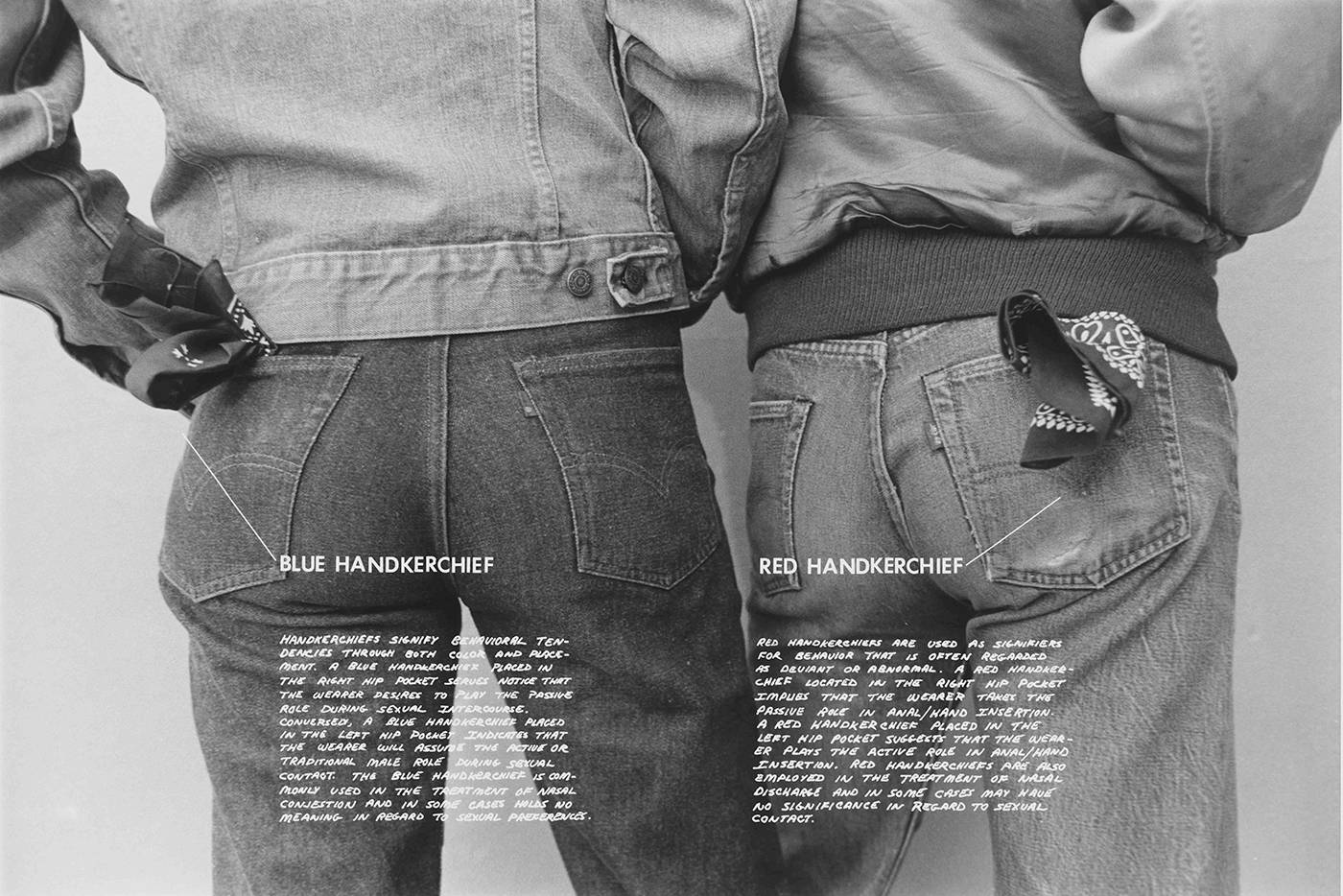
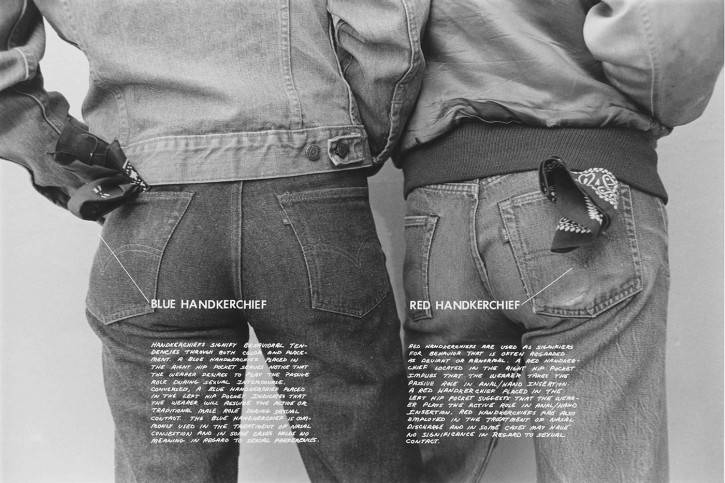

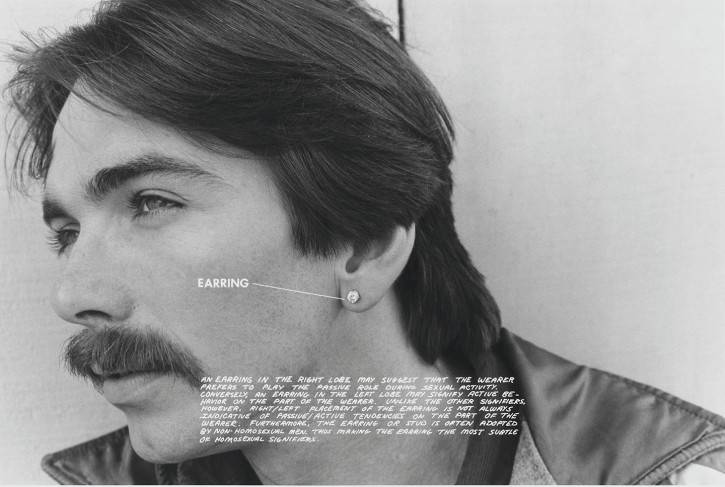
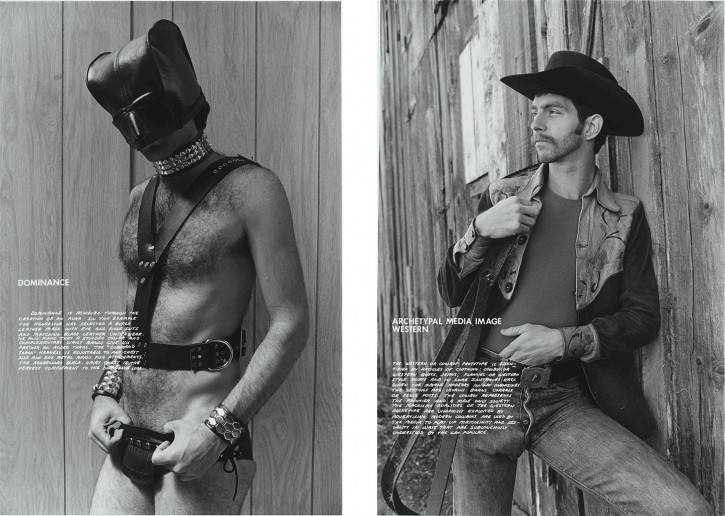
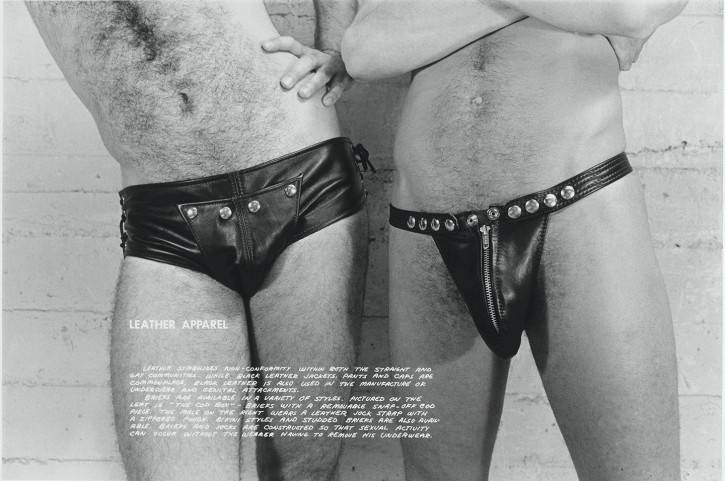
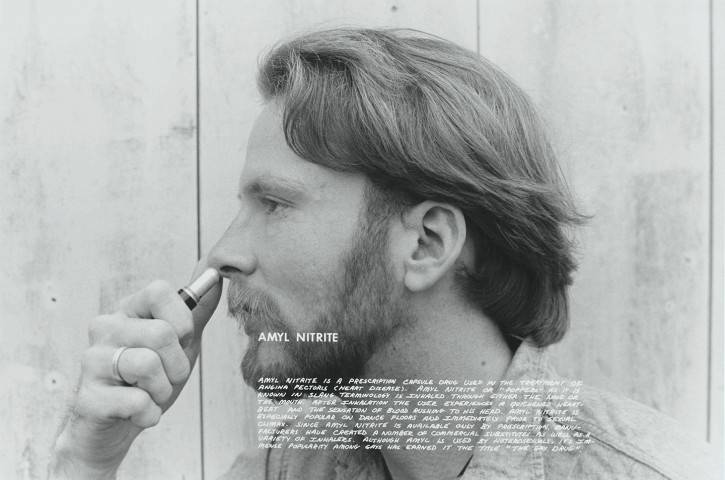


I’ve heard or know about most of this, if not all. Still a nice look at the history.
Keys on the right as being passive is a new one on me.
Ah, memories of when it was a secret code to catch the attention of another secret member. The fact that no one so far remembers this is sad, as we went thru a lot to get to this stage. I still clip my keys on the left even though on my motorbike it’s more convenient for them to be on the right. No one knows or cares, but I wear a yellow hanky in both pockets just to see who notices…
I used to have the published hanky color code articles but it got lost through the years. When the health crisis hit in 1981, it was over.
Back then, when being gay was largely criminal, hankies allowed you to telegraph your interests/preferences openly in an oblivious straight world. The code has never gone away, but largely retreated to the leather/BDSM world. Most leather shops still have a selection. ( Mr. S Leather online, out of SF, stocks for those in small towns… Search “bandanas).
Historians think the hanky code grew out of Gold Rush days in San Francisco when the miners hit the saloons and dance halls to whoop it up. Square Dancing was the style, but there were extremely few women in a virtually all male town. Guys still loved to dance and the habit of wearing blue bandanas on the arm, belt or rear pocket said you were the male lead and red, the female follower. It probably spread quickly as it stopped many a misunderstanding brawl. I’m sure, then as now, it also was gay code too. As leather culture and gay bikers grew postwar, the keys were clipped to the belt for convenience/safety like a chained wallet, but like bigpa said also as a signal for leather and top(L)/bottom(R). See some of the old pics of the Satyrs on their website. Someone suggested hankies at the Village Voice at the start of the ’70s to signal more info to cruisers and the habit was born.
In the vintage pic above of the ‘cowboy’ look, they’d wear it around the neck and wear the knot right or left back in the day. The meaning of the colors varied geographically, but some, like yellow were obviously piss/watersports everywhere. I’m sure misunderstood colors or innocently worn ones lead to some interesting encounters….lol!